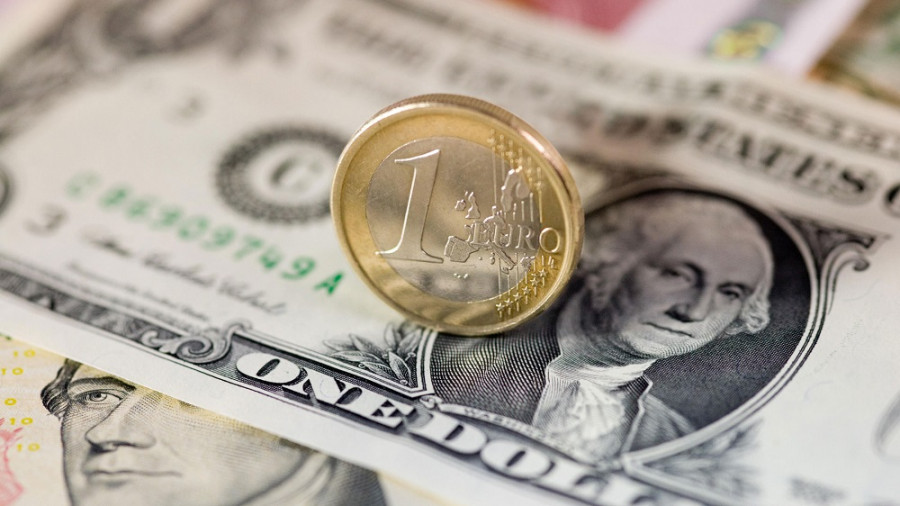See also


 14.03.2025 12:55 AM
14.03.2025 12:55 AMOn Thursday, the EUR/USD pair reached a three-day low of 1.0823 but did not break into the 1.07 range, as the downward momentum gradually faded. The EUR/USD pair is currently in a paradoxical situation: the dollar is attempting to strengthen even as key inflation indicators in the U.S. show signs of slowing down.
On Wednesday, the U.S. released the February Consumer Price Index (CPI), with all components in the "red zone". The overall CPI fell to 2.9% year-over-year after four consecutive months of increases, while the core index dropped to 3.1% year-over-year, its lowest level since May 2021.
On Thursday, another key inflation indicator monitored by the Federal Reserve, the Producer Price Index (PPI), was published. On a monthly basis, the overall PPI remained unchanged at 0.0%, following a rise of 0.6% in January. While most analysts had anticipated a decline, they did not expect it to fall to zero—forecasts had predicted a drop to 0.3%. On an annual basis, the PPI fell to 3.2%, slightly below the forecast of 3.3%. This marks the first slowdown after four months of consecutive growth from October to January.
The core PPI also ended up in the "red zone." Month-over-month, it plunged into negative territory at -0.1%, the first such drop since July 2024 (forecast: +0.3%). Year-over-year, it showed a downward trend for the first time in six months, reaching 3.4% in February after hitting 3.8% in the previous month.
So why did EUR/USD decline despite the slowdown in U.S. inflation? Most analysts attribute this dynamic to the looming trade war between the U.S. and the European Union.
In my view, this is an emotional reaction from traders. "Trumponomics" has not recently favored the U.S. dollar, even amid rising risk aversion. However, in this case, the euro has also come under pressure, leading to what might be called an "unusual" trader reaction in EUR/USD. Still, there are no fundamental reasons for a trend reversal in the pair—none existed before, and none exist now.
On Wednesday, the European Commission announced €26 billion in tariffs on U.S. goods in response to Trump's 25% tariffs on steel and aluminum imports. The new EU tariffs target alcohol (such as bourbon), Harley-Davidson motorcycles, jeans, industrial goods, and agricultural products, including poultry and beef. Brussels officials stated that the measures would take effect in mid-April but could be lifted "at any time if an agreement with the White House is reached."
However, Donald Trump opted for escalation rather than de-escalation, threatening new tariffs on European alcoholic beverages—"200% on all alcohol." He claimed the European Union is "one of the most hostile and aggressive tax and tariff structures in the world, created solely to take advantage of the U.S." As a result, he announced a 200% tariff on all wine, champagne, and alcoholic products from France and other European countries.
Following Trump's announcement, shares of European alcohol companies experienced a sharp decline. For instance, Remy Cointreau shares dropped by 3.8%, Pernod Ricard fell by 3.2%, and LVMH (which owns Moet & Chandon and Veuve Clicquot) saw a decrease of 1.9%.
Additional support for EUR/USD sellers came from the weekly U.S. jobless claims report, which revealed a figure of 220,000. This was slightly lower than last week's 222,000 and better than the forecast of 226,000, providing some support for the U.S. dollar.
Despite these developments, I believe that the downward trend in EUR/USD should not be trusted. The fundamental factors that pressured the U.S. dollar earlier in the week have not disappeared. For example, JP Morgan economists now estimate a 40% probability of a U.S. recession in 2025, which is an increase from 30% at the beginning of the year. Moreover, over 90% of economists surveyed by Reuters in the U.S., Canada, and Mexico indicated that recession risks have risen due to Trump's trade tariffs.
The weak PPI data indicates that demand is indeed weakening and is likely to continue declining. It's also important to mention that we are currently in the "quiet period" leading up to the Fed's meeting in March, with the results scheduled to be announced next week.
This situation suggests that we are experiencing a price correction rather than a trend reversal. Taking short positions on the currency pair appears to be unreliable and even risky, as there is no fundamental basis for a sustained price decline. Instead, these corrective pullbacks should be viewed as opportunities to enter long positions.
From a technical perspective, the EUR/USD pair remains positioned between the middle and upper Bollinger Bands on the daily (D1) timeframe and is above all Ichimoku lines, which indicates a bullish "Parade of Lines" signal. The upside targets are set at 1.0900 and 1.0950, coinciding with the upper Bollinger Band on the daily chart.
You have already liked this post today
*The market analysis posted here is meant to increase your awareness, but not to give instructions to make a trade.
Trading on the last day of the week is unfolding positively. News that China is ready to begin negotiations has inspired investors to buy risk assets and weakened the U.S
Only a few macroeconomic events are scheduled for Friday, but some are quite significant. Naturally, the focus is on the U.S. NonFarm Payrolls and unemployment rate, yet it's also important
On Thursday, the GBP/USD currency pair continued to decline. The dollar had strengthened for three consecutive days—despite having no objective reason. U.S. macroeconomic data has been consistently weak; there were
On Thursday, the EUR/USD currency pair once again traded relatively calmly, but the U.S. dollar failed to show any meaningful growth this time. A little bit of good news goes

Your IP address shows that you are currently located in the USA. If you are a resident of the United States, you are prohibited from using the services of InstaFintech Group including online trading, online transfers, deposit/withdrawal of funds, etc.
If you think you are seeing this message by mistake and your location is not the US, kindly proceed to the website. Otherwise, you must leave the website in order to comply with government restrictions.
Why does your IP address show your location as the USA?
Please confirm whether you are a US resident or not by clicking the relevant button below. If you choose the wrong option, being a US resident, you will not be able to open an account with InstaTrade anyway.
We are sorry for any inconvenience caused by this message.

